How to Set Sales Quotas [Free Calculator Included]
Casey O'Connor
A sales quota is a short-term performance benchmark that exists to keep sales reps and sales teams on track and motivated as they work toward sales goals.
Most sales leaders are well aware that they need to set quotas for their team members, but it isn’t as straightforward as it seems. Setting effective quotas isn’t just about telling every rep to do 10% better than they did last quarter.
In this article, we’ll go over everything you need to know about how to set sales quotas, including what they are, how they differ from sales goals and sales targets, some different types that may work for your team, and a sales quota calculator to get you started.
Here’s what we’ll cover:
- What Is a Sales Quota?
- Sales Quota vs. Sales Goals
- Sales Quota vs. Sales Targets
- Why Are Sales Quotas Important?
- Types of Sales Quotas
- How to Set Sales Quotas
- Sales Quota Calculator
- Quota-Setting Sales Tips
What Is a Sales Quota?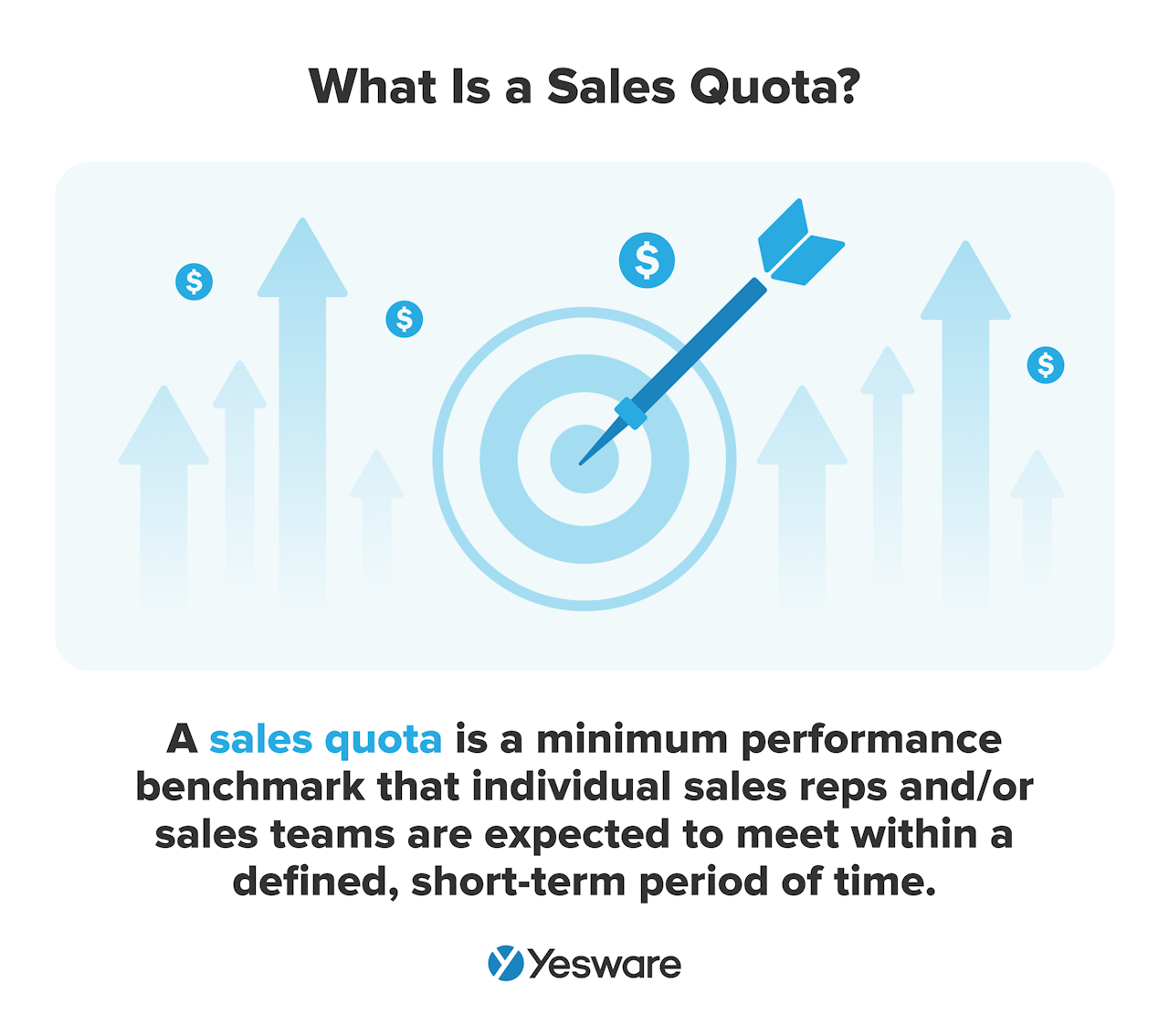
A sales quota is a minimum performance benchmark that individual sales reps and/or sales teams are expected to meet within a defined, short-term period of time.
Sales managers usually create sales quotas on a monthly or quarterly basis. They can be defined by a variety of criteria, including revenue, number of units sold, level of sales productivity, and more.
Sales quotas exist to help motivate sales reps, encourage accountability, and support fair compensation structures.
Sales Quota vs. Sales Goals
The term “sales quota” is often conflated with other similar sales words. That being said, there are noteworthy differences between each of them, and sales reps need to know how to differentiate the true meaning behind the terms.
There are, for example, important nuances between a sales quota and an overall sales goal.
It’s fair to say that a sales quota is a type of goal, in a general sense. That being said, a sales quota is distinctly different from a “sales goal,” the latter being a much longer-term objective with clear parameters.
Sales quotas are more like stepping stones toward larger sales goals. Each individual rep needs to hit their own personal sales quotas in order for sales goals to be achieved.
Sales Quota vs. Sales Targets
Sales quotas are also often confused with sales targets. And while sales targets are generally considered short-term much like sales quotas, the two are also distinct from one another.
Sales targets are generally more team-oriented than individual and are not tied to compensation. Sales targets define how much product a team needs to sell, how much revenue they need to generate, and/or how productive sales teams need to be (as a whole) in order to reach their sales goals.
In other words, sales targets help break down sales goals into smaller, more manageable (and more easily achievable) parts.
Why Are Sales Quotas Important?
Setting sales quotas should be a non-negotiable part of any sales leader’s job responsibilities.
Sales quotas motivate sales reps and teams, provide a map for them as they navigate the sales pipeline, and improve their performance.
Motivates Sales Reps
Sales quotas help motivate sales reps to work as hard as they can to meet team goals. This is especially true when sales quotas are tied to sales incentives and compensation plans.
The best way to ensure your sales quotas are motivating and will inspire reps to perform their best is to follow the SMART goal framework when setting quotas. 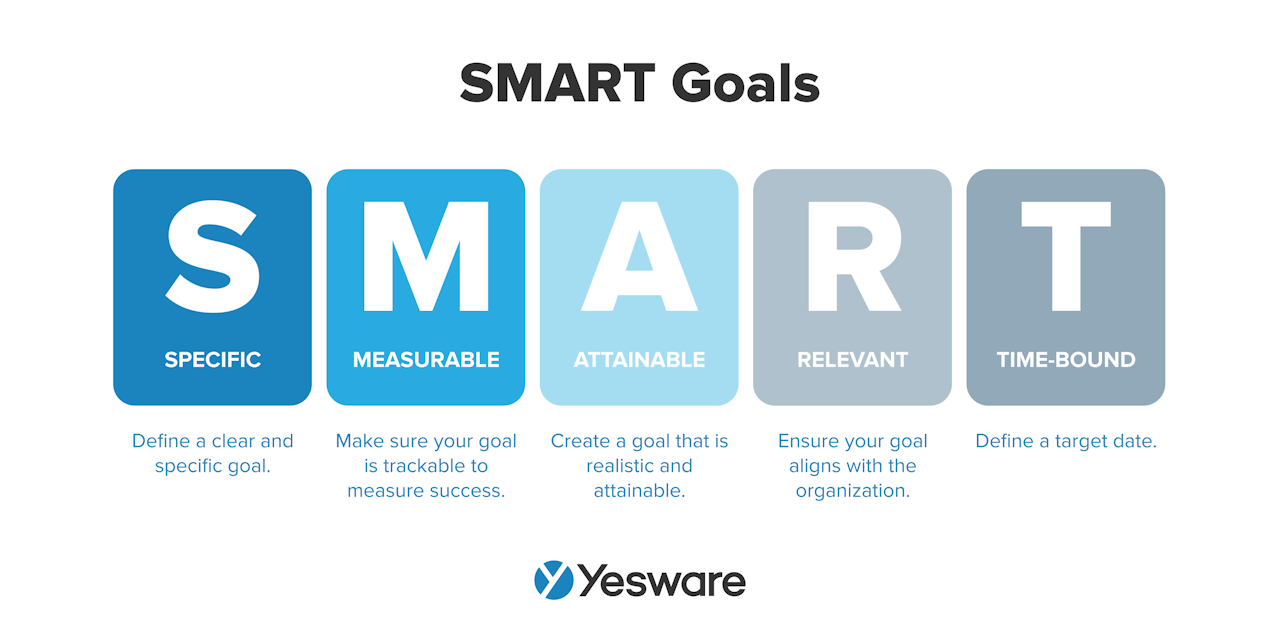 The SMART goal framework helps sales leaders and reps understand how to set sales quotas that are not so challenging that they’re frustrating, but also not so easy that they won’t move the needle when it comes to sales goals.
The SMART goal framework helps sales leaders and reps understand how to set sales quotas that are not so challenging that they’re frustrating, but also not so easy that they won’t move the needle when it comes to sales goals.
The accountability that comes with setting quotas can also be highly motivating for sales reps.
Provides a Map
Remember, sales quotas are kind of like stepping stones on the path toward larger sales targets and goals. Sales quotas can act as a guide for sales reps as they measure their own contribution toward organizational and personal performance goals.
Setting quotas ensures that every individual, as well as the sales team as a whole, are constantly moving forward and making progress toward sales goals.
Improves Individual and Overall Performance
When teams and individuals set sales quotas, they make a tangible plan for improving specific sales results over a defined period of time. Teams who set sales quotas have been shown to increase revenue generation and conversion rates.
Types of Sales Quotas
There are many ways to set sales quotas for sales reps and teams. The specific parameters that you set within the quotas for your team will ultimately depend on your larger overall sales targets, goals, the strengths of your reps, and industry trends and forecasts.
Following are six of the most common types of sales quotas. 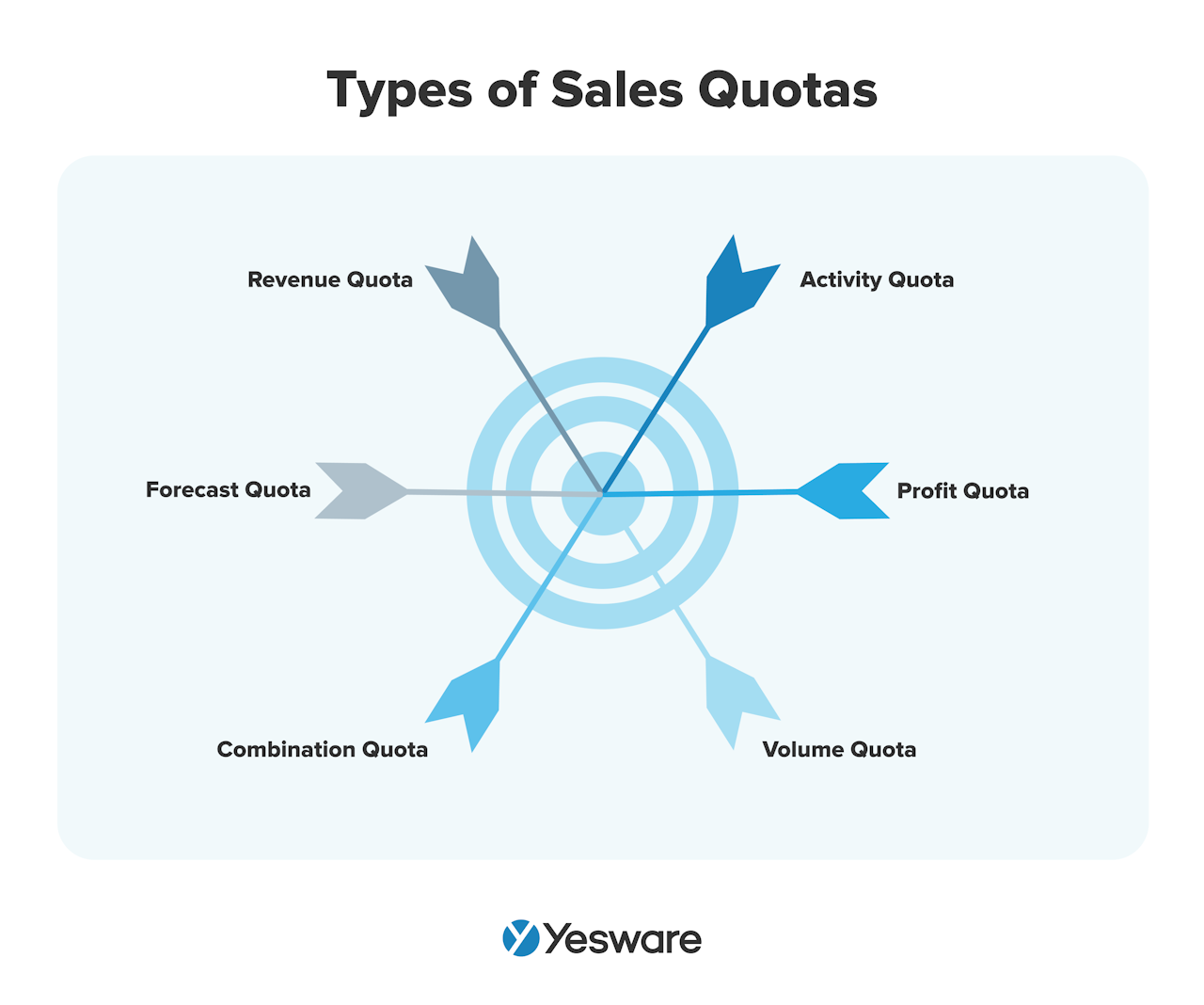
1. Activity Quota
Activity quotas are created with sales productivity in mind.
Quotas that revolve around sales activity might require sales reps to reach a certain number of cold calls, cold emails, follow-up emails, meetings scheduled, or demos performed.
Sales leaders usually create activity goals for business development reps (BDRs) and sales development reps (SDRs). These reps may not necessarily be involved in sales presentations or closing deals, but the work they do in the top half of the pipeline can be very impactful for overall sales results.
Sales activity quotas can be easily tracked within most CRM systems.
2. Profit Quota
A profit quota can be based on either gross margin (subtract your cost of goods (COGs) from your overall revenue) or gross profit (subtract selling expenses and COGs from overall revenue).
A profit quota gives sales reps the exact dollar amount in profit that they need to earn in order to see consistent sales growth. This helps reps learn about and prioritize high-value deals with higher-profit payoffs.
Sales leaders can create profit quotas for sales teams, individual sales reps, or based on product/service offer groupings.
3. Volume Quota
A volume quota is, in some respects, the opposite of a profit quota.
A volume quota sets no expectations for profit margin and instead requires sales reps to simply sell a certain number of units during a specific sales period.
Volume quotas help keep inventory moving and encourage reps to cross-sell and upsell throughout the sales process.
4. Combination Quota
Combination quotas are true to their name and allow sales managers to create unique quotas based on a combination of parameters.
Sales managers might, for example, choose to create a quota that combines sales activity and profit quota to encourage SDRs to focus their efforts on the highest-value opportunities in the pipeline.
A combination quota can be particularly useful for enterprise companies, who tend to work toward many different sales targets simultaneously.
5. Forecast Quota
Sales forecast quotas are usually reserved for entire sales teams or specific sales territories.
This type of quota is calculated based on historical sales data and is used to determine revenue goals for a specific team or region.
6. Revenue Quota
Revenue quotas help sales reps understand how much revenue they each need to generate in a given time period. The revenue goals are created by looking at long-term sales goals related to revenue.
Revenue goals are very straightforward and simple but can also be easily customized to fit the unique needs and goals of your team.
No sales team or rep should avoid setting quota because there doesn’t seem to be a “type” to fit your needs. Quotas are extremely customizable.
For example, smaller companies may opt for quotas that focus on volume or number of units sold as they’re just starting out. Larger companies may need quotas that cover more complex targets, like average deal value. It’s okay to iterate on the process of setting quotas until you find a system that works for your team.
How to Set Sales Quotas
When it comes to setting sales quotas, the number of options can make it feel challenging for sales managers to pinpoint which will be most effective.
Remember to use the SMART goal framework as you work through the process of setting sales quotas. And pay careful attention to how your reps respond to the quotas you set; though it may sound counterintuitive, you actually don’t want all of your sales reps to hit their quota.
In fact, Sales Hacker data estimates that your team’s quotas are effective and motivating enough if just 60% of your reps hit them. Some research puts this figure at closer to 80%, but regardless — the point is that quotas aren’t meant to be achieved by every rep, every time.
The quota-setting process will ultimately vary by team make-up and organizational goals, but the following general steps can give you a framework for beginning the process.
Quota-Setting Process:
- Choose your quota type. Consider your industry, market size, company size, and organizational goals.
- Determine the right approach for your team. Will you use a top-down approach or a bottoms-up approach (more on these options in a minute)?
- Get a baseline. What is the minimum number of sales you need to generate in order to stay competitive? What about in order to stay in business? Consider your historical sales data, seasonal trends, and market conditions.
- Calculate sales quotas. Take into account your organization’s goals and forecasted growth. Yesware’s sales calculator in the next section will help you determine the exact parameters.
- Define your time period. Most sales quotas are set on a monthly or quarterly basis.
- Communicate expectations. Make sure you take the time to go over sales quotas with each member of your team. Sales quotas work because they encourage transparency and accountability, so lead by example in this department and be forthcoming with your team about your expectations.
Expanding on step two above, let’s look at the two approaches to setting sales quotas: top-down and bottom-up. 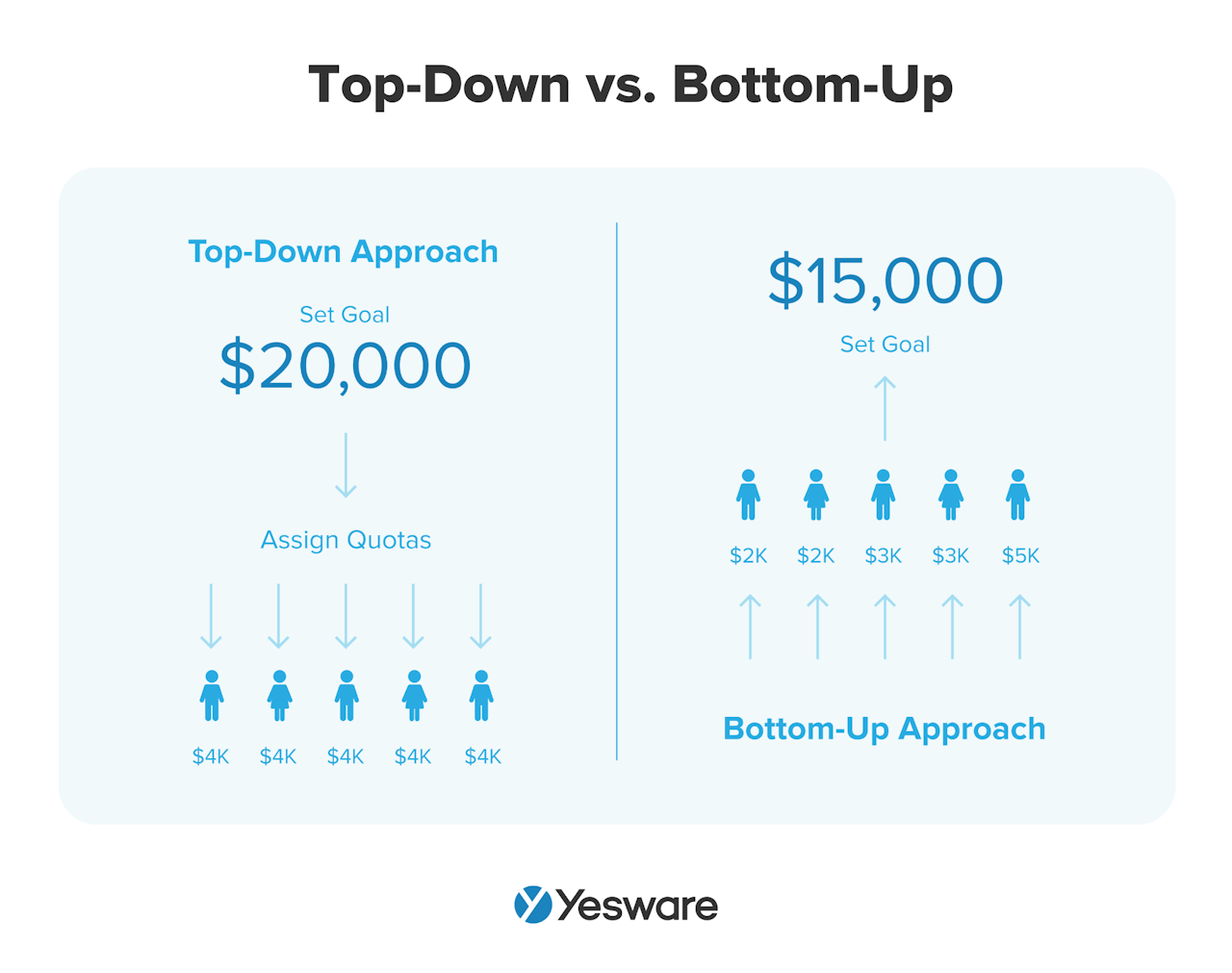
Top-Down Approach
In a top-down approach to setting sales quotas, sales managers first look at the company’s overall revenue goals, and then set individual/team quotas accordingly.
For example, if a sales team has an overall sales goal of $100,000 this quarter, each of the four sales reps on the team will be expected to sell $25,000.
A top-down approach can be effective for teams who want to ensure that everyone contributes equally, but some sales managers find that it doesn’t leave enough room to account for individual reps’ strengths and areas of need.
Bottom-Up Approach
With a bottom-up approach, sales leaders look at reps’ past sales performance when they set quotas. They take into account reps’ strengths, relationships, and historical trends when setting individual quotas.
Larger sales targets and sales goals are then set based on individual quotas.
In this model, a sales manager might look at each individual sales rep on their team and set the following quotas based on their strengths and pipeline opportunities:
- Sales Rep 1: $28,000
- Sales Rep 2: $22,000
- Sales Rep 3: $30,000
- Sales Rep 4: $20,000
The sales team is still working toward a $100,000 sales target, but each rep has a unique quota.
Sales Quota Calculator
We created an easy-to-use sales quota calculator to help crunch the numbers for you. The calculator has two types: both a top-down and bottom-up approach. We look at how to use both below.
How to Use the Top-Down Quota Calculator
When a company is under pressure to grow fast, it’s easy to resort to a top-down approach to setting a quota.
It’s set strictly by sales leadership, focusing strongly on growth targets and loosely on rep ability.
Here are the questions that a sales leadership team asks when working out a quota this way:
- What does the business need to do to hit the CEO/Board/Exec team goals?
- What’s our average rep bringing in per market/territory?
- What’s the fudge factor for longer ramp and the sensitivity analysis around missing the plan?
The top-down calculator calculates the number of deals each rep needs to work on per month in order to hit their quota.
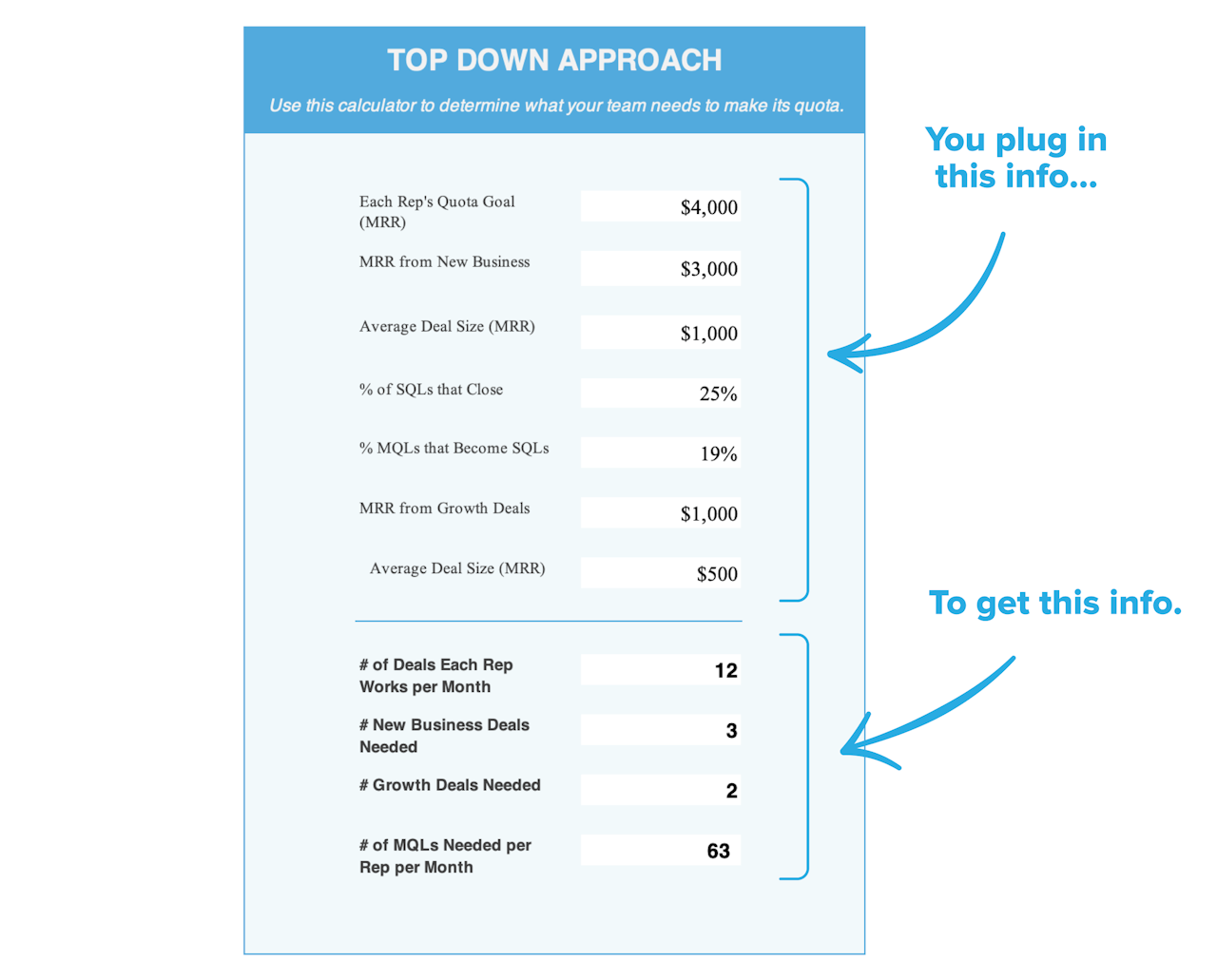
Because this calculator requires a quota and then calculates what’s needed to make it, the top-down approach is based more on expectation than reality. It causes the vast majority of unattainable quotas.
When quotas are consistently missed, teams often hire more reps or trim out those who aren’t making it. The reality, though, is often that the quota is unattainable altogether.
This is why we are big advocates of the next approach.
How to Use the Bottom-Up Quota Calculator
This strategy starts with what you know reps are capable of to get to what the board’s looking for.
It calculates a quota based on your team’s historical results over the past six to twelve months:
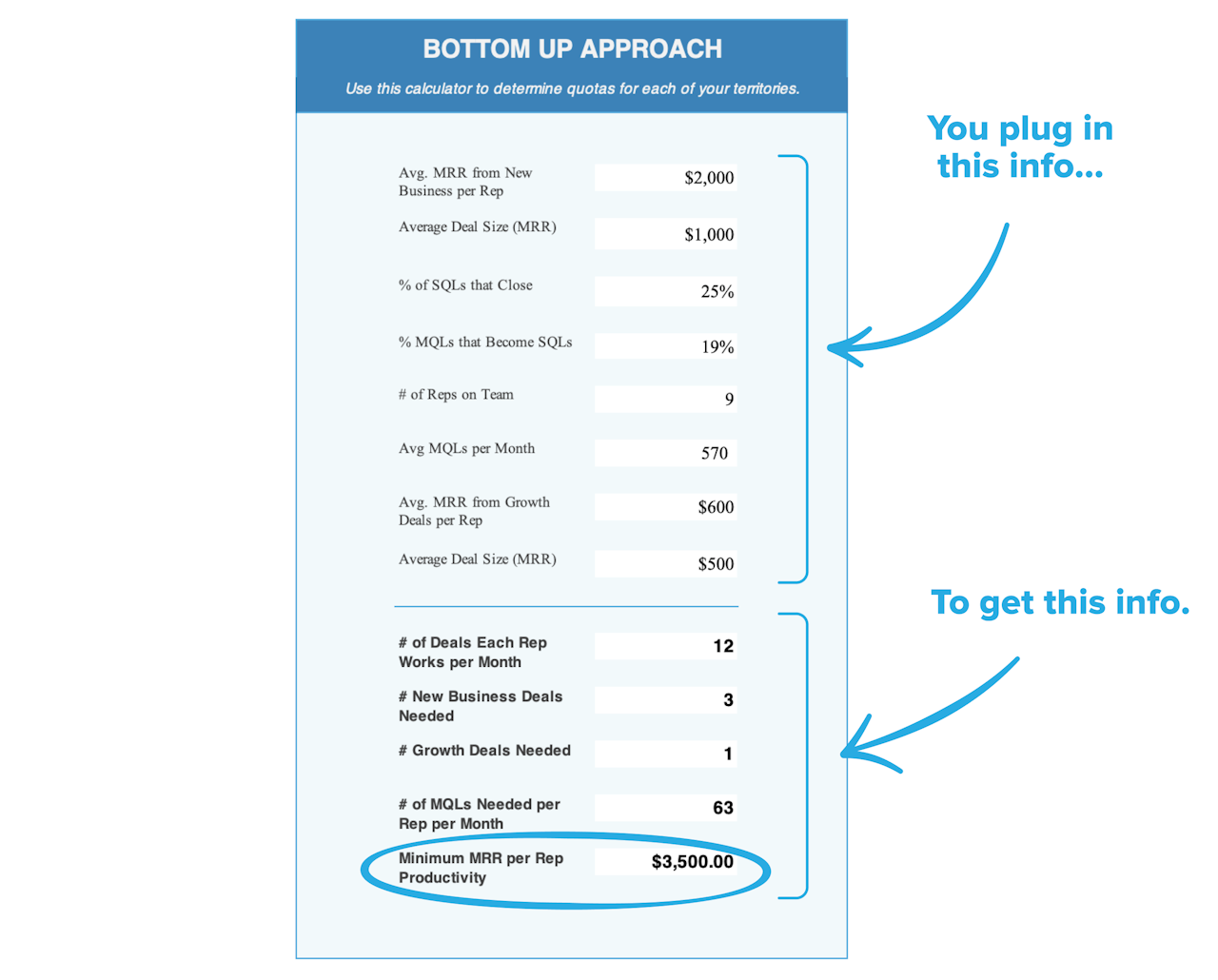
With this approach, a leadership team answers these questions in goal-setting conversations:
- What are the stages of our sales and marketing funnel?
- What are the conversion rates between each stage?
- What do conversion rates look like according to each market/territory segment?
So, not only are you pulling quotas from your rep’s realities, but you’re factoring in other teams and abilities by segment. This ensures that each territory or market segment your team is split into has a fair shot.
For each market segment on your sales team, you should calculate a different quota.
It’s important to take this step because conversion rates can vary. At Yesware, we’ve found that conversion rates for SQL → Close varies as much as 4x between SMB and Enterprise segments.
No matter which approach you choose, going through and identifying numbers to plug into the calculator will serve as an advantage to you beyond using the calculator.
It lets you objectively look at your numbers and percentages and evaluate them. If you recognize, for instance, that your MQL → SQL conversion rate is very low, you can probe further and identify the root of the issue.
Once you’ve set a quota, you can have conversations with your team about how you’re going to optimize the process to make the business work better.
Download The Calculator Here
If you’re interested in trying out the calculator for yourself, enter your email address below and click “Download Excel” – you’ll get the calculator sent straight to your inbox.
If you don’t see the calculator in your inbox, try looking under “Promotions.”
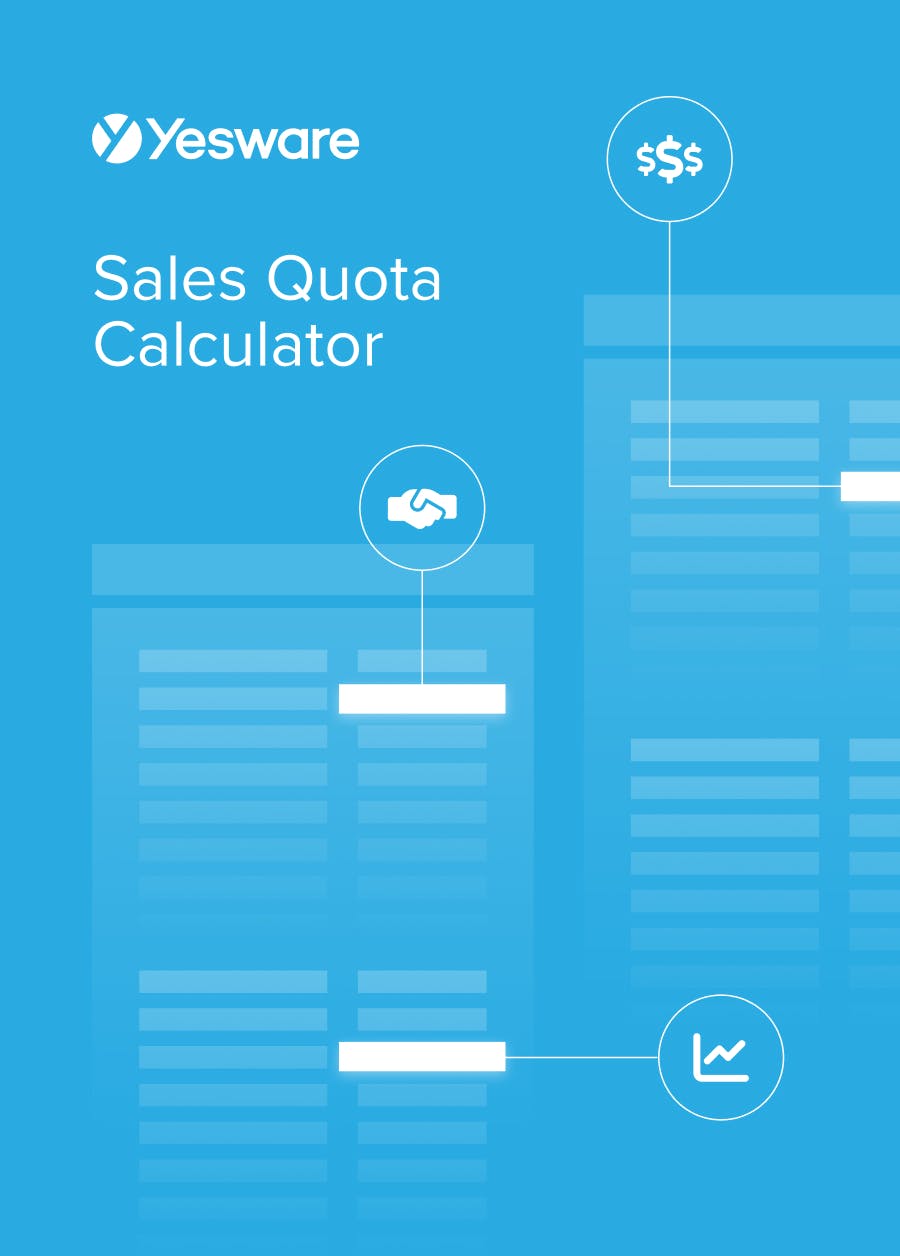 Sales Quota CalculatorEasy-to-use calculator that spins up the right sales quota for your team with either a top-down or button-up approach.
Sales Quota CalculatorEasy-to-use calculator that spins up the right sales quota for your team with either a top-down or button-up approach.
Quota-Setting Sales Tips
Here are a handful of our favorite tips to keep in mind when setting your team’s sales quota.
- Use a data-driven approach. And make sure you use historical sales data, current performance markers, and forward-looking industry trends and forecasts. In general, quotas based on territory (rather than individual rep performance) can increase sales by two to seven percent.
- Make quota-setting a collaborative process. Your reps know themselves best and usually have very good insight into what they can realistically achieve within their pipeline.
- Be realistic. It may be tempting to set high-bar quotas to help your team exceed goals, but unrealistic goals that are too challenging will ultimately be de-motivating to your team.
- Avoid commission caps. These are also very unmotivating to your team and will likely hurt potential revenue generation long before any rep hits their cap.
- Provide a sales quota agreement that outlines the parameters and expectations of each quota. This helps increase transparency and accountability.
How Yesware Can Help Your Team Hit Quota
Yesware can help sales reps and sales teams consistently hit quota with data, automation, and real-time views into customer behavior.
Our reporting and analytics capabilities are powerfully insightful and can help sales reps understand which of their emails and sales content are most effective for their target market.
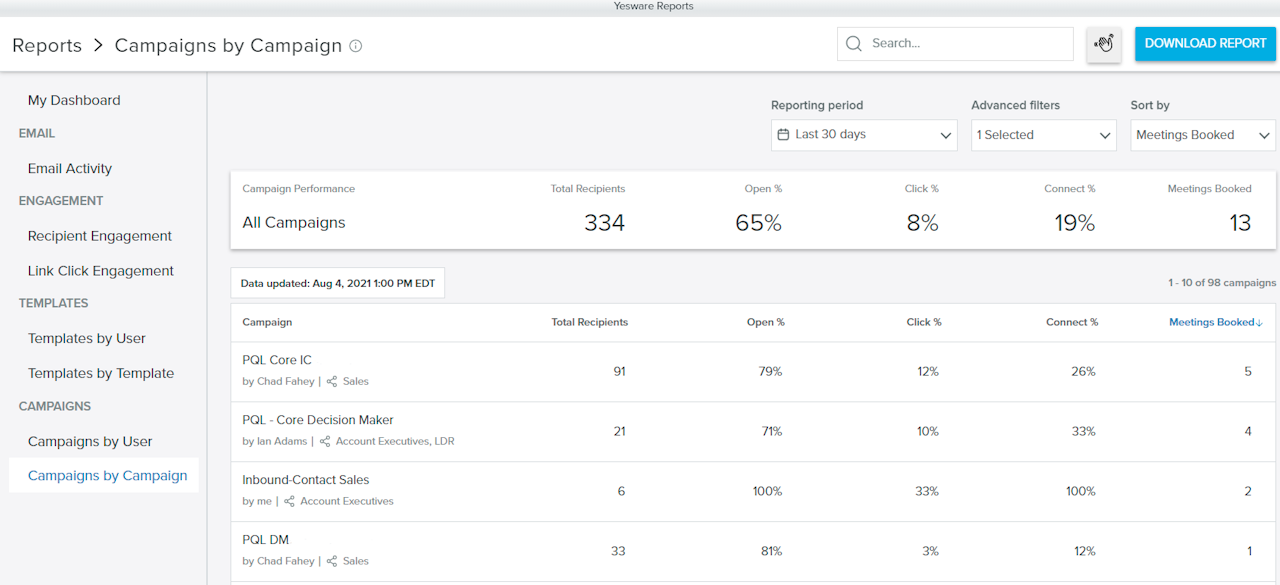
It shows which prospects are most engaged at any given stage of the pipeline.
Yesware also helps reps increase their productivity with tools like email templates, auto-campaign features, and our meeting scheduler tool.
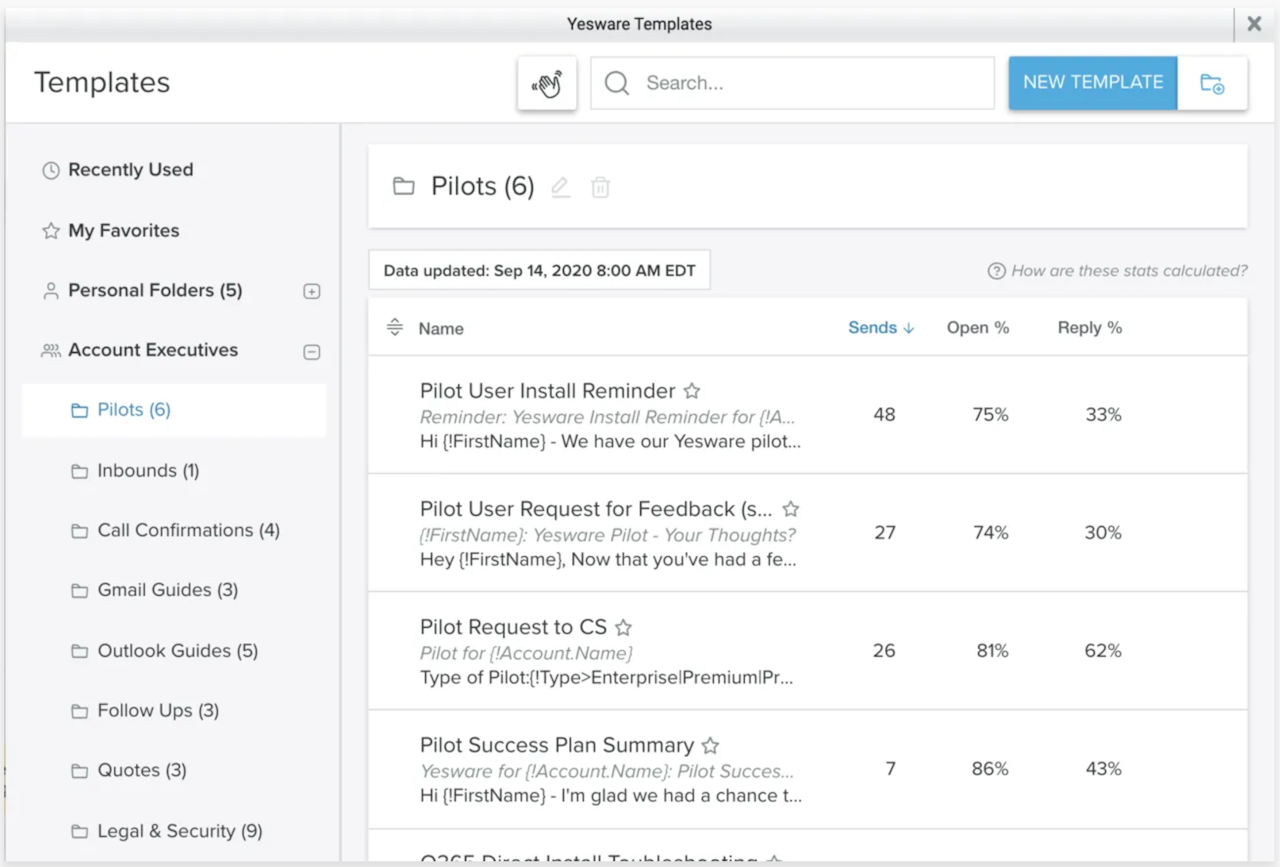
Our multi-channel campaign feature allows sales reps to send personalized outreach at scale, so no lead ever falls through the cracks.
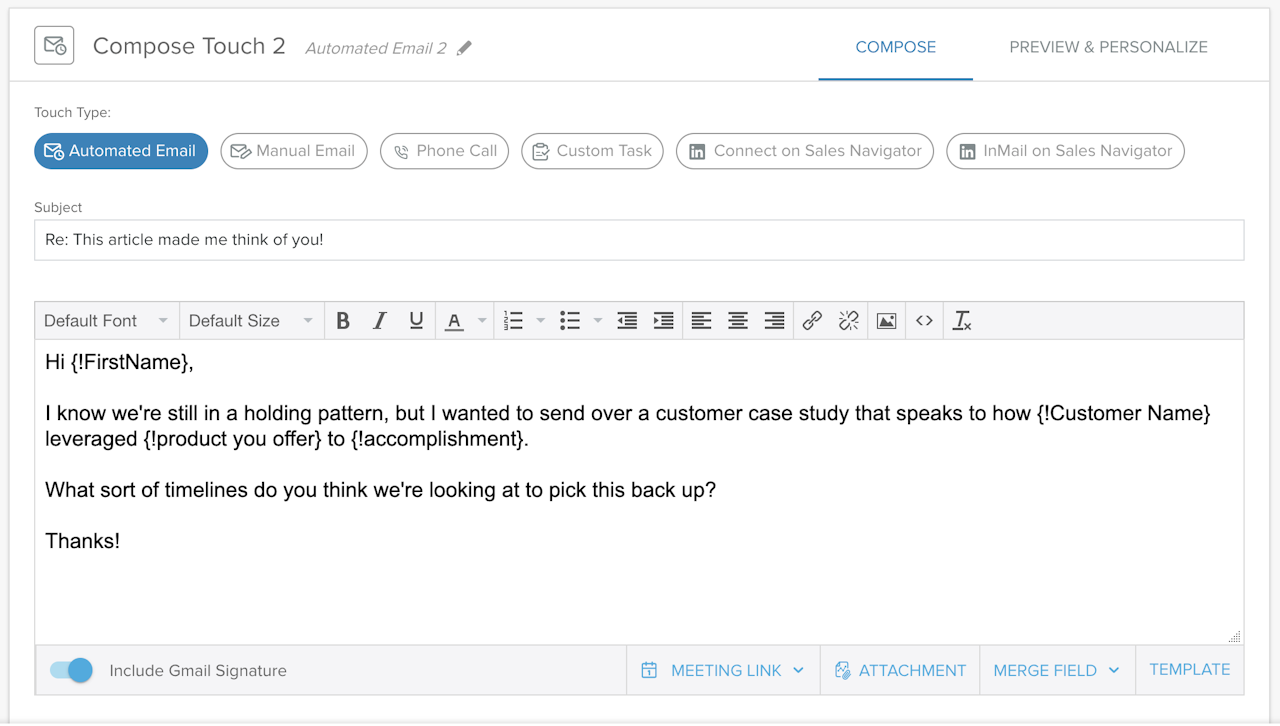
Yesware’s features help sales reps stay on top of each and every one of their deals, no matter where they are in the pipeline.
How do you set sales quotas with your team? Which types have been most successful so far? How can you adjust your quota-setting process to achieve new growth?
This guide and calculator were updated on June 14, 2023.
Get sales tips and strategies delivered straight to your inbox.
Yesware will help you generate more sales right from your inbox. Try our Outlook add-on or Gmail Chrome extension for free, forever!
Related Articles
Anya Vitko
Casey O'Connor
Casey O'Connor
Sales, deal management, and communication tips for your inbox
![How to Set Sales Quotas [Free Calculator Included]](/blog/_next/image/?url=https%3A%2F%2Fwww.yesware.com%2Fwp-content%2Fuploads%2F2018%2F12%2Fsales-quota-yesware.jpg&w=1984&q=75)
